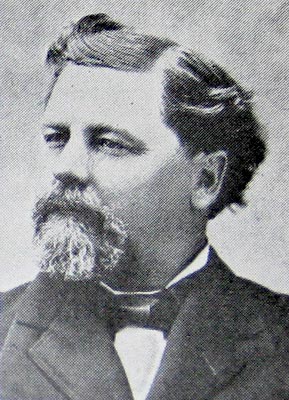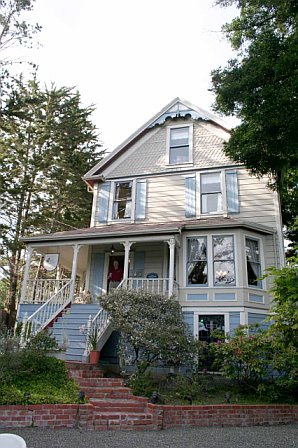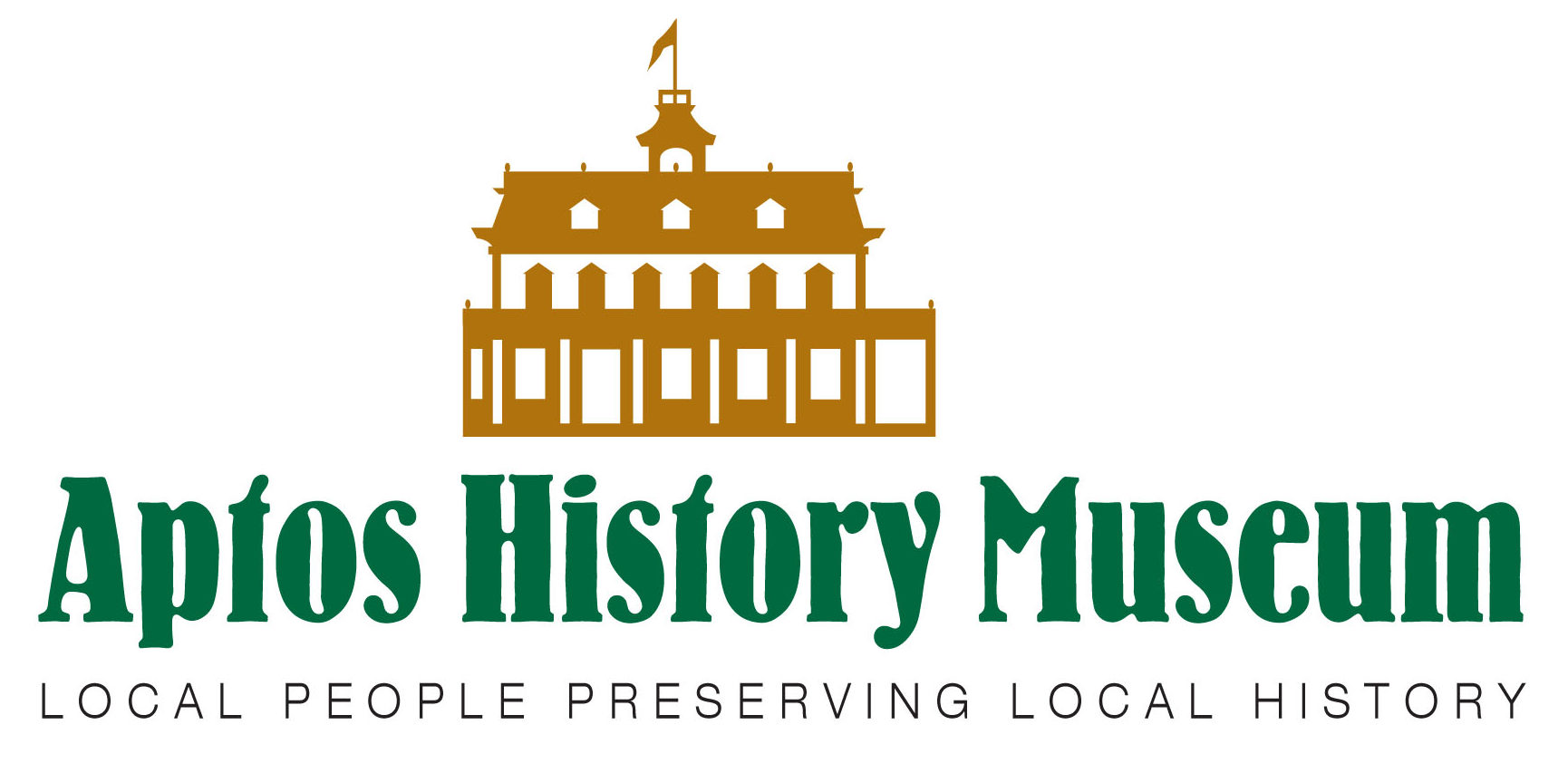A tannery once occupied the land where Temple Beth El stands today just west of Cabrillo College and a piece of that tannery still remains. Today, that property is in the Aptos 95003 zip code, but it was originally considered to be in Soquel. The tannery’s origin goes back to the days when Monterey was the capital of Mexican California.
In 1833, Martina Castro, (Rafael’s sister), requested and was given the Soquel Rancho by Governor Figueroa, a grant of 1,668 acres. The rancho stretched from Soquel Creek, east to Borregas Gulch, (which would also put Cabrillo College in Soquel). In 1850, Martina divided her land among her children and gave one portion to her daughter Luisa, who was married to a Frenchman, Jean Richard Fourcade, known as Juan Ricardo to the locals. The Fourcades established a tannery on the property in 1853 from which Tannery Gulch derived its name.
The property changed hands several times from 1855 to 1859and, as a result of a default on a loan by William Andrews, the deed was transferred from Sheriff John T. Porter to his brother, George K. Porter, for the sum of $740, recorded May 27, 1859.
George Keating Porter, born February 9, 1833, was the son of Ann Thomas and Dr. John Thomas Porter, a sixth generation descended from John and Priscilla Alden of the Mayflower. They lived on a portion of the farm settled by the Aldens in Duxbury Massachusetts. The farm was part of the estate granted by the King of England. Dr. Porter was educated at Dartmouth College and was the attending physician of Daniel Webster.

George was the first of the Porters to be lured to California during the “gold rush”. Sailing from Boston on February 7, 1849 on the brig Acadian, he celebrated his sixteenth birthday at sea. After a voyage of 264 days, he arrived in San Francisco and promptly set out for the mines. From there he tried his hand at farming, lumbering, and drayage, (hauling freight with horse teams). The drayage business proved unprofitable, but George was able to pay off all his debts out of his own pocket.
In 1859, George purchased the Soquel property and with his cousin, Benjamin Franklin Porter, operated and enlarged the tannery built by Fourcade, eventually processing 25,000 hides per year. Tannery Gulch became alternately known as Porter Gulch.

This drawing shows the tannery in 1878. George Porter’s house is in the lower center of the drawing. Benjamin Porter’s home is drawn farther to the right and half way up. Today’s Sesnon House on the Cabrillo College campus was built next to Benjamin’s home.
From 1861 to 1863 George was the State Senator for Santa Cruz County. George and Ben purchased additional Soquel property in 1864, 1866 and 1872.
In 1863, George contracted with the State to use convict labor. 100 prisoners from San Quentin were trained to make boots and shoes using leather from the Soquel tannery. Within two years, they were producing 3,000 boots and shoes annually. In 1870, the San Quentin plant burned, and a modern factory was built at the corner of Sansome and Clay Streets in San Francisco, under the name of Porter, Slesinger and Company.
George built his home at the tannery in the early 1870’s. Then in 1874, George, Ben and Senator
Charles Maclay bought approximately 60,000 acres in the San Fernando Valley of Southern
California, including the old San Fernando Mission, at a cost of $3.33 per acre. Thousands of acres of grain were planted, and horses, dairy cattle and sheep were raised. The property was undivided until George married Katherine Caystile, sister to Thomas Caystile, founder of the Los Angeles Mirror newspaper and later took over the Los Angeles Times Los Angeles newspaper. The property was then divided, and George took the smaller portion which was closer to the railroad. In 1887, he planted the first citrus orchard in the valley which was called “The Porter Strip”. It was a half mile wide by two- and one-half miles long.
About 1905, George sold 17,000 acres to the San Fernando Mission Land and Water Company for one million dollars and a ten percent interest in the company. He kept 2,400 acres and built a three-story mansion at a cost of $50,000.
George Keating Porter died November 16, 1906, at the age of 73. His daughter remembered him as “a big man, physically and morally, dressed in black, wearing a white shirt and a black string tie. He always wore the most beautifully, bench made boots” He was truly one of California’s most notable pioneers.
In 1966, Peter Farquhar purchased George Porter’s Soquel house and together with Barbara Buckmaster, his wife, began restoring the building. They opened the home as Aptos’ first Bed and Breakfast Inn on May 1, 1983 as the Apple Lane Inn.

The building came complete with a ghost, conveniently located outside. A woman named Catherine Butler died in childbirth at the farmhouse and was originally buried in the field to the east of the house. At night, after the field has been plowed, a young woman in a white blouse and black skirt has been seen roaming the field. Sam Butler, her son, visited the Inn in December 1997 and confirmed the story.
The second owners, Doug and Diana Groom, had an interesting discovery in 1991. While doing some work on the foundation of the carriage house, which is now attached to the main house, they found an antique Worcestershire sauce bottle. The Lee & Perrons Company said that type of bottle was produced prior to 1876. A rare find indeed. The Inn had five guest rooms and served a full country breakfast. An economic downturn eventually made the inn unprofitable and it was returned to use as a private home. The building is located on a separate parcel above Temple Beth El.




